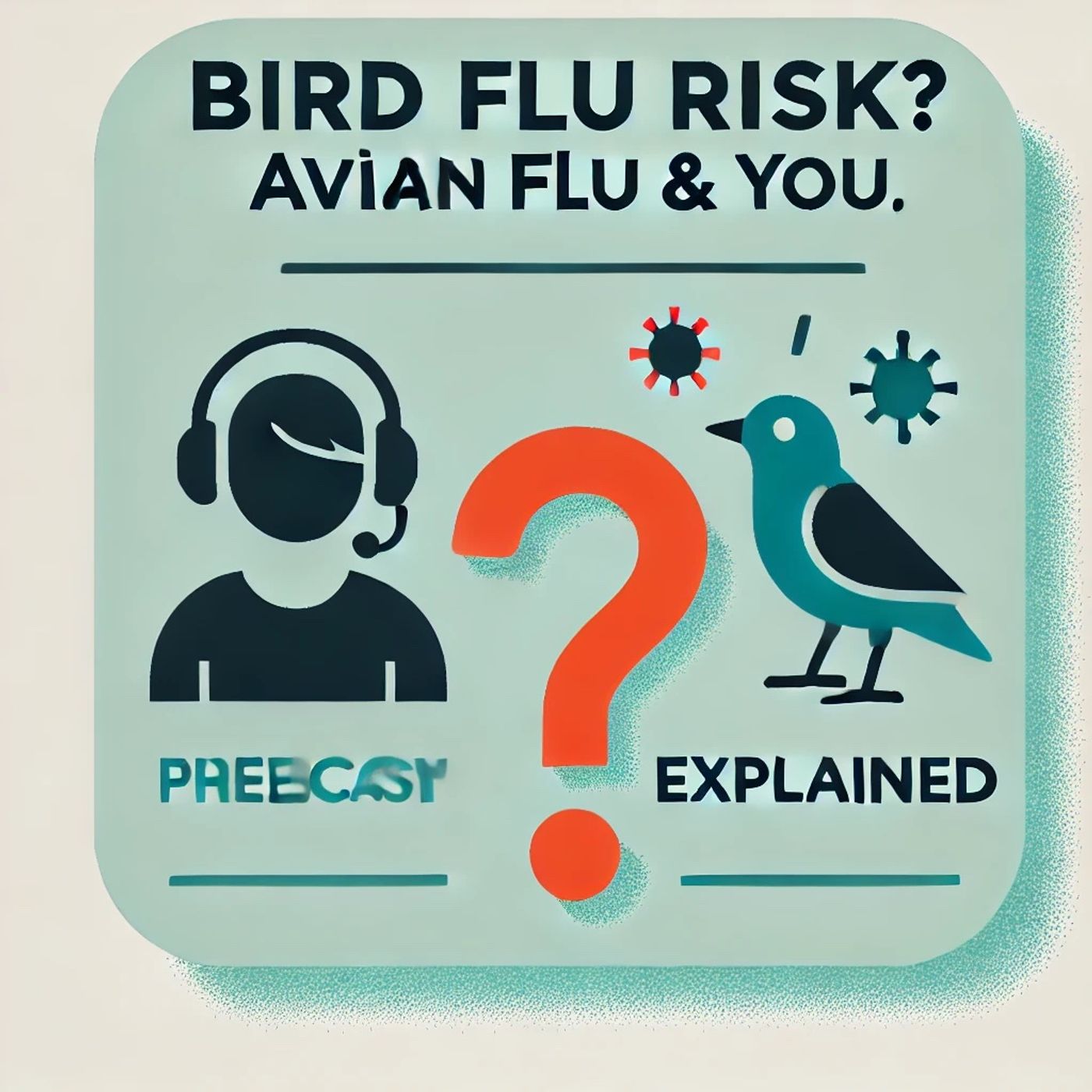Podcast Episode Details
Back to Podcast Episodes
Bird Flu Alert 2025 Personalized Risk Guide What You Need to Know About Avian Flu Exposure and Prevention
This is Bird Flu Risk? Avian Flu & You, Explained, your three-minute personalized risk assessment. Today, we’re helping you understand what bird flu means for you—right now, in August 2025. Let’s get started with what you need to know most.
First, what is your individual risk? According to the World Health Organization and the CDC, the general public’s risk of catching bird flu remains low, even after this year’s animal outbreaks. Human cases are rare and usually only happen after very close contact with infected live animals, mostly birds or, in some regions, dairy cows.
Let’s personalize your risk. If your occupation keeps you around live poultry, dairy cows, or animal processing—think poultry farm workers, veterinarians, slaughterhouse workers, or people handling raw milk—your risk is higher than average. Studies from Johns Hopkins and Italian researchers highlight that commercial and backyard poultry workers, those at live bird markets, and agricultural workers in close contact with wild birds or livestock carry the most exposure. For those working in animal health, prevention like using protective gear, hand washing, and prompt reporting of sick animals is key.
Where you live matters, too. Bird flu outbreaks are most concerning in places with large poultry farms or recent wild bird die-offs. If you’re in these zones—typically rural or agricultural regions—extra vigilance is needed, especially around sick or dead animals. But in most cities or suburban areas where exposure is rare, your risk of catching bird flu is extremely low.
Now, age and health status. CDC says older adults—especially over 65—face a greater risk of severe illness if infected. Children, however, are among the least at risk. If you have a weakened immune system or chronic health issues, your risk of complications goes up, so extra precautions are wise.
Let’s walk through a quick “risk calculator” scenario:
- If you’re a city resident, work indoors, do not handle live animals, and have no backyard poultry—your risk is near zero.
- If you manage a small farm and occasionally handle chickens, you’re in a higher but manageable risk group. Consistently use gloves, masks, and wash hands afterward.
- If you work daily at a large poultry facility or process raw milk, you are at the highest risk and should follow every company safety protocol, get vaccinated if recommended, and report illness promptly.
For anyone in high-risk groups—farm workers, animal handlers, or those over 65 with health conditions—be proactive. Use recommended protective equipment, avoid close contact with sick animals, and seek medical advice at the first sign of flu-like symptoms. If public health advises vaccination, take it.
For everyone else, be reassured: The chance of getting bird flu is extremely low unless you have direct, prolonged exposure to infected animals. Bird flu is not spreading from person to person. You don’t need to worry about casual contact—shopping, traveling, or living in populated communities.
Deciding on protective measures comes down to your level of exposure. If you work with animals, follow workplace guidelines and wear protective gear. For most, simple hygiene is all you need.
Remember—be vigilant only if you work with birds, live in an outbreak area, or have health risks. Otherwise, don’t worry. As always, stay informed through trusted health sources.
Thanks for tuning in to Bird Flu Risk? Avian Flu & You, Explained, a Quiet Please production. For more, check out Quiet Please Dot A I. Join us again next week for clear and timely health updates.
For more http://www.quietplease.ai
Get the best deals https://amzn.to/3ODvOta
Published on 2 weeks ago